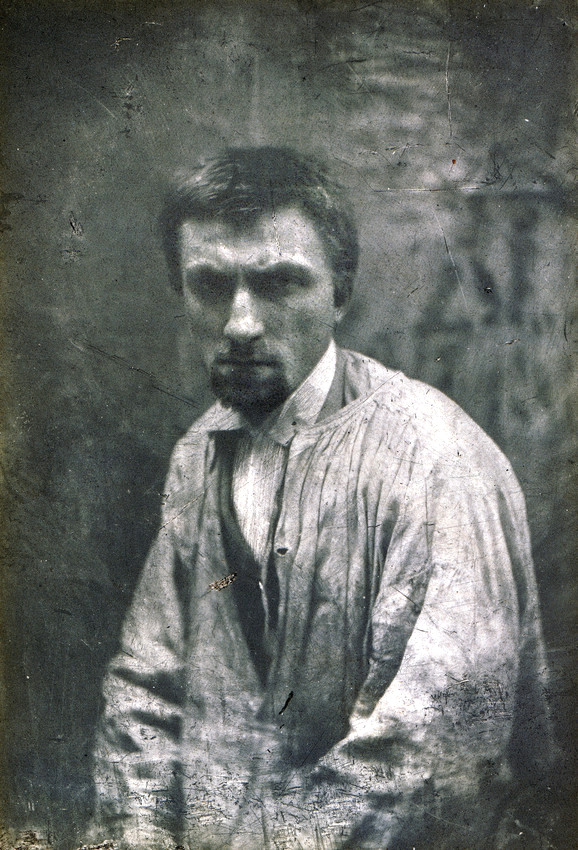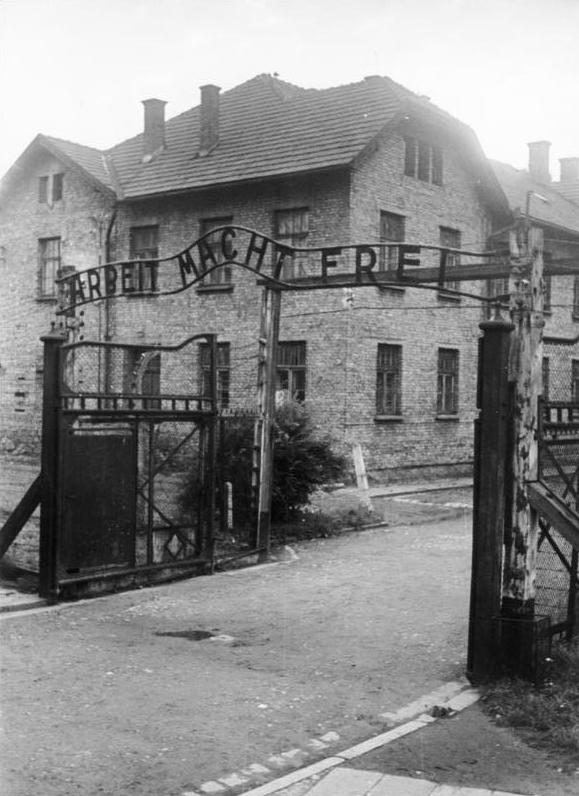|
Dragomir Arambašić
Dragomir Arambašić (1881–1945) was a Serbian sculptor and painter. Biography Arambašić came from a notable Serbian family, his great-grandfather was Bimbaša Stanko Arambašić of the First Serbian Uprising. His decision to practice sculpture was influenced by his acquaintance with Czech sculptor Jan Konjarek, who lived and worked in Belgrade at the time. He began his sculpture studies in Dresden with Anton von Werner and graduated from the Accademia di San Luca in Rome with Giuseppe Ferrari. He was a member of the LADA and the Association of Painters and Sculptors. Arambašić was also one of the founders of the Association of Fine Artists of Serbia. After his studies in Munich and Dresden, Dragomir Arambašić studied in Rome and Paris. Entering the Antonin Mercié Atelier in 1912 he accepted the postulates found there, including the "Florentine renewals" evident in his works "The Girl with the Broken Tug" and "The Fisherman casts the net". In the "Mother's" sculpture ... [...More Info...] [...Related Items...] OR: [Wikipedia] [Google] [Baidu] |
Bimbaša
A ''binbashi'', alternatively ''bimbashi'', (from tr, Binbaşı, "chief of a thousand", " chiliarch") is a major in the Turkish army, of which term originated in the Ottoman army. The title was also used for a major in the Khedivial Egyptian army as ''Bimbashi'' (1805–1953). It was also used by the Serbian revolutionaries as ''Bimbaša'' ( sr-cyr, Бимбаша) in 1804–1817. Since the restructuring of the modern Turkish Army in 1934, ''Binbaşı'' means major; but in the Ottoman Army (and in the pre-1934 Turkish Army, during the early years of the Turkish Republic) the more correct equivalent of the Western rank "major" was ''Kolağası'' (senior captain), which ranked above ''Yüzbaşı'' (captain) and below ''Binbaşı''. When the rank ''Kolağası'' was removed from the Turkish Army in 1934, the rank ''Binbaşı'' was relegated to major (before 1934, the rank ''Binbaşı'' was also considered an equivalent of lieutenant colonel.) Until 1934, it was the duty of a ... [...More Info...] [...Related Items...] OR: [Wikipedia] [Google] [Baidu] |
Auguste Rodin
François Auguste René Rodin (12 November 184017 November 1917) was a French sculptor, generally considered the founder of modern sculpture. He was schooled traditionally and took a craftsman-like approach to his work. Rodin possessed a unique ability to model a complex, turbulent, and deeply pocketed surface in clay. He is known for such sculptures as '' The Thinker'', '' Monument to Balzac'', '' The Kiss'', '' The Burghers of Calais'', and '' The Gates of Hell''. Many of Rodin's most notable sculptures were criticized, as they clashed with predominant figurative sculpture traditions in which works were decorative, formulaic, or highly thematic. Rodin's most original work departed from traditional themes of mythology and allegory. He modeled the human body with naturalism, and his sculptures celebrate individual character and physicality. Although Rodin was sensitive to the controversy surrounding his work, he refused to change his style, and his continued output brought i ... [...More Info...] [...Related Items...] OR: [Wikipedia] [Google] [Baidu] |
Male Sculptors
Male (symbol: ♂) is the sex of an organism that produces the gamete (sex cell) known as sperm, which fuses with the larger female gamete, or ovum, in the process of fertilization. A male organism cannot reproduce sexually without access to at least one ovum from a female, but some organisms can reproduce both sexually and asexually. Most male mammals, including male humans, have a Y chromosome, which codes for the production of larger amounts of testosterone to develop male reproductive organs. Not all species share a common sex-determination system. In most animals, including humans, sex is determined genetically; however, species such as '' Cymothoa exigua'' change sex depending on the number of females present in the vicinity. In humans, the word ''male'' can also be used to refer to gender in the social sense of gender role or gender identity. Overview The existence of separate sexes has evolved independently at different times and in different lineages, an examp ... [...More Info...] [...Related Items...] OR: [Wikipedia] [Google] [Baidu] |
1945 Deaths
1945 marked the end of World War II and the fall of Nazi Germany and the Empire of Japan. It is also the only year in which nuclear weapons have been used in combat. Events Below, the events of World War II have the "WWII" prefix. January * January 1 – WWII: ** Germany begins Operation Bodenplatte, an attempt by the ''Luftwaffe'' to cripple Allied air forces in the Low Countries. ** Chenogne massacre: German prisoners are allegedly killed by American forces near the village of Chenogne, Belgium. * January 6 – WWII: A German offensive recaptures Esztergom, Hungary from the Russians. * January 12 – WWII: The Soviet Union begins the Vistula–Oder Offensive in Eastern Europe, against the German Army. * January 13 – WWII: The Soviet Union begins the East Prussian Offensive, to eliminate German forces in East Prussia. * January 16 – WWII: Adolf Hitler takes residence in the ''Führerbunker'' in Berlin. * January 17 ** WWII: The Soviet Union occupies Warsaw, Polan ... [...More Info...] [...Related Items...] OR: [Wikipedia] [Google] [Baidu] |
1881 Births
Events January–March * January 1– 24 – Siege of Geok Tepe: Russian troops under General Mikhail Skobelev defeat the Turkomans. * January 13 – War of the Pacific – Battle of San Juan and Chorrillos: The Chilean army defeats Peruvian forces. * January 15 – War of the Pacific – Battle of Miraflores: The Chileans take Lima, capital of Peru, after defeating its second line of defense in Miraflores. * January 24 – William Edward Forster, chief secretary for Ireland, introduces his Coercion Bill, which temporarily suspends habeas corpus so that those people suspected of committing an offence can be detained without trial; it goes through a long debate before it is accepted February 2. * January 25 – Thomas Edison and Alexander Graham Bell form the Oriental Telephone Company. * February 13 – The first issue of the feminist newspaper ''La Citoyenne'' is published by Hubertine Auclert. * February 16 – The Canad ... [...More Info...] [...Related Items...] OR: [Wikipedia] [Google] [Baidu] |
Serbian Expatriates In France
Serbian may refer to: * someone or something related to Serbia, a country in Southeastern Europe * someone or something related to the Serbs, a South Slavic people * Serbian language * Serbian names See also * * * Old Serbian (other) * Serbians * Serbia (other) * Names of the Serbs and Serbia Names of the Serbs and Serbia are terms and other designations referring to general terminology and nomenclature on the Serbs ( sr, Срби, Srbi, ) and Serbia ( sr, Србија/Srbija, ). Throughout history, various endonyms and exonyms have ... {{Disambiguation Language and nationality disambiguation pages ... [...More Info...] [...Related Items...] OR: [Wikipedia] [Google] [Baidu] |
List Of Serbian Painters
This is a list of notable Serbian painters. A * Nikola Aleksić (1808–1873) * Dimitrije Avramović (1815–1855) * Ljubomir Aleksandrović (1828–1890) * Stevan Aleksić (1876–1923) * Dragomir Arambašić (1881–1945) * Stojan Aralica (1883–1980) * Đorđe Andrejević Kun (1904–1964) * Mika Antić (1932–1986) * Dragoslav Pavle Aksentijević (born 1942) * Marina Abramović (born 1946) * Nataša Atanasković (born 1972) * Emanuil Antonovich (1785–1829) B * Nikola Božidarević (1460–1517) * Dimitrije Bačević (1735–1770) * Georgije Bakalović (1786–1843) * Anastas Bocarić (1864–1944) * Špiro Bocarić (1876–1941) * Jovan Bijelić (c.1884–1964) * Ilija Bašičević (1895–1972) * Oto Bihalji-Merin (1904–1993) * Dimitrije Bratoglic (1765–1831) * Janko Brašić (1906–1994) * Miloš Bajić (1915–1995) * Radivoj Berbakov (1925–2003) * Kossa Bokchan (1925–2009) * Ivana Bašić (born 1986) C * Gala Čaki (born 1987) * Teodor Ili ... [...More Info...] [...Related Items...] OR: [Wikipedia] [Google] [Baidu] |
Kalemegdan
The Kalemegdan Park ( sr, / ), or simply Kalemegdan ( sr-Cyrl, Калемегдан) is the largest park and the most important historical monument in Belgrade. It is located on a cliff, at the junction of the River Sava and the Danube. Kalemegdan Park, split in two as the Great and Little Parks, was developed in the area that once was the town field within the Belgrade Fortress. Today residents often erroneously refer to the entire fortress as the Kalemegdan Fortress or just Kalemegdan, even though the park occupies the smaller part, especially of the historical fortress, and it is some two millennia younger. The fortress, including the Kalemegdan, represents a cultural monument of exceptional importance (from 1979), the area where various sport, cultural and arts events take place, for all generations of Belgraders and numerous visitors of the city. History Pre-park history The name is formed from the two Turkish words: ''kale'' (meaning "fortress") and meydan' (me ... [...More Info...] [...Related Items...] OR: [Wikipedia] [Google] [Baidu] |
Cvijeta Zuzorić Art Pavilion
„Cvijeta Zuzorić“ Art Pavilion ( sr, Уметнички павиљон "Цвијета Зузорић", ) is an exhibition building in Belgrade, in Kalemegdan, situated in the park's section of Little Kalemegdan, next to the south-eastern front of the Belgrade fortress. It was built between 1927 and 1928 after the design of the architect Branislav Kojić, in the Art Deco architectural style. It was the first venue built specifically as an exhibition space, or an art gallery, in Serbia. History Origin Area at the top of the Little Kalemegdan, which is occupied by the pavilion today, was an open fairground for a long time. Tents were placed, with numerous attractions: ''panoptikum'' or collections of curios, ''okular'' ("funny" ocular lenses), magicians, fortune tellers, illusionists, etc. Ilija Božić performed here the very first Serbian puppet show, ''Kuku, Todore''. In the mid-1920s the fair was displaced to Voždovac, an eastern suburb at the time, due to the impen ... [...More Info...] [...Related Items...] OR: [Wikipedia] [Google] [Baidu] |
Leskovac
Leskovac (Serbian Cyrillic: Лесковац, ) is a city and the administrative center of the Jablanica District in southern Serbia. According to the 2022 census, City of Leskovac has a 124,889 inhabitants. Etymology Leskovac was historically called ''Glubočica'', later evolving into ''Dubočica. These'' interchangeable variants derived from the Serbian word's, "''glib''", meaning mud and "''duboko''", meaning deep. Untamed rivers would often flood the area leaving swamps that once dried would spout hazelnut trees, or "''leska''" in Serbian, whilst "''vac''" is a common Slavic suffix, hence ''Leskovac''. During Ottoman rule the town was referred to in Turkish as ''Leskovçe'' or ''Hisar'' (Turkish translation; ''fortress''). History Early period Archeological findings on Hisar Hill, located at the rim of Leskovac valley between the Jablanica and Veternica rivers, have established continual habitation between the Bronze Age until the 19th century. Hisar served a ... [...More Info...] [...Related Items...] OR: [Wikipedia] [Google] [Baidu] |
Kingdom Of Yugoslavia
The Kingdom of Yugoslavia ( sh-Latn-Cyrl, separator=" / ", Kraljevina Jugoslavija, Краљевина Југославија; sl, Kraljevina Jugoslavija) was a state in Southeast and Central Europe that existed from 1918 until 1941. From 1918 to 1929, it was officially called the Kingdom of Serbs, Croats and Slovenes ( sh-Latn-Cyrl, separator=" / ", Kraljevina Srba, Hrvata i Slovenaca, Краљевина Срба, Хрвата и Словенаца; sl, Kraljevina Srbov, Hrvatov in Slovencev), but the term "Yugoslavia" (literally "Land of South Slavs") was its colloquial name due to its origins."Kraljevina Jugoslavija! Novi naziv naše države. No, mi smo itak med seboj vedno dejali Jugoslavija, četudi je bilo na vseh uradnih listih Kraljevina Srbov, Hrvatov in Slovencev. In tudi drugi narodi, kakor Nemci in Francozi, so pisali že prej v svojih listih mnogo o Jugoslaviji. 3. oktobra, ko je kralj Aleksander podpisal "Zakon o nazivu in razdelitvi kraljevine na upravna območja ... [...More Info...] [...Related Items...] OR: [Wikipedia] [Google] [Baidu] |




